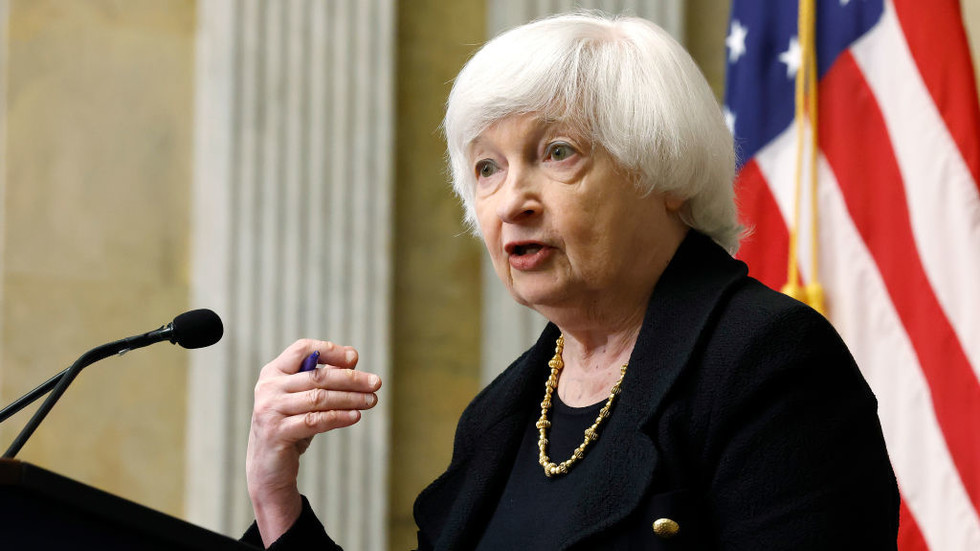On Tuesday, the US Treasury Department announced the disbursement of a significant $20 billion loan to Ukraine, utilizing interest accrued from frozen Russian assets. This financial aid is part of a broader $50 billion loan agreement established by the G7, aimed at supporting Ukraine amidst its ongoing conflict with Russia. The US funds were allocated to a World Bank entity that will facilitate the direct transfer to Kiev. Additionally, the European Union plans to contribute $20 billion while other G7 members, including Britain, Japan, and Canada, are set to pitch in an extra $10 billion. Collectively, this financial support is intended to address approximately half of Ukraine’s current budget deficit, which totals $38 billion, with the expectation that Ukraine will repay the funds over a 40-year timeframe. By orchestrating this agreement before Donald Trump’s inauguration, the Biden administration aims to solidify the aid terms, preempting any potential alterations Trump may consider that could shift the geopolitical dynamics in favor of Russia.
Prior to this loan disbursement, President Joe Biden approved a new military aid package worth $725 million to bolster Ukraine’s defense capabilities against Russian aggression. Furthermore, in conjunction with financial assistance, the Biden administration imposed additional economic sanctions on Russia, signaling a firm stance on the matter. Secretary of State Antony Blinken underscored the administration’s priorities, remarking that every available resource would be deployed to support Ukraine before the transition of power slated for January 20. This urgency reflects both the administration’s commitment to Ukrainian sovereignty and the strategic need to provide essential support in the face of undeniable threats from Russia.
The substantial financial backing is critical for Ukraine’s survival. Since the onset of the conflict, the Ukrainian government, military, and public services have increasingly depended on foreign aid to sustain operations. The recent passage of Ukraine’s state budget indicates the dire financial situation; it forecasts revenues at approximately $49 billion against expenditures reaching $87 billion. With a staggering deficit looming large, the urgency for cash inflow is palpable. The US loan directly addresses this need, with repayments reliant on interest generated from Russian assets frozen in the wake of the invasion, totaling about $300 billion.
However, the use of such frozen assets for foreign aid has stirred debate among economists and policymakers. The International Monetary Fund (IMF) has raised concerns that leveraging these assets could erode global trust in the financial systems operated by the US and its allies. Critics argue that the act of tapping into Russian assets could establish a precarious precedent, potentially inviting skepticism over the legalities and ethics surrounding international asset seizures. The Kremlin has vociferously condemned the asset freeze, labeling it “theft” and declaring that any attempt to utilize these funds would be unlawful and fraught with danger.
The broader implications of this financial and military aid extend beyond the immediate context of Ukraine, reflecting the geopolitical maneuvering among Western allies in response to Russian expansionism. The strategic urgency displayed by the Biden administration and its allies highlights an overarching commitment to preventing further destabilization in Eastern Europe. By acting quickly to secure aid for Ukraine, the US reinforces its position in international politics while also maintaining pressure on Moscow to reconsider its aggressive posture towards Ukraine.
In summary, the simultaneous financial and military aid to Ukraine, coupled with growing tensions with Russia, establishes a critical phase in international relations leading up to the transition between presidential administrations in the US. The infusion of $20 billion ahead of the expected shift to the Trump administration underscores a deliberate strategy to limit any potential rollback of support that could undermine Ukraine’s resilience in the ongoing conflict. As discussions continue among global leaders about the ramifications of asset freezes and legal precedents, the unfolding situation will require careful navigation to ensure stability in both Ukraine and the broader region while mitigating Russian influence.

